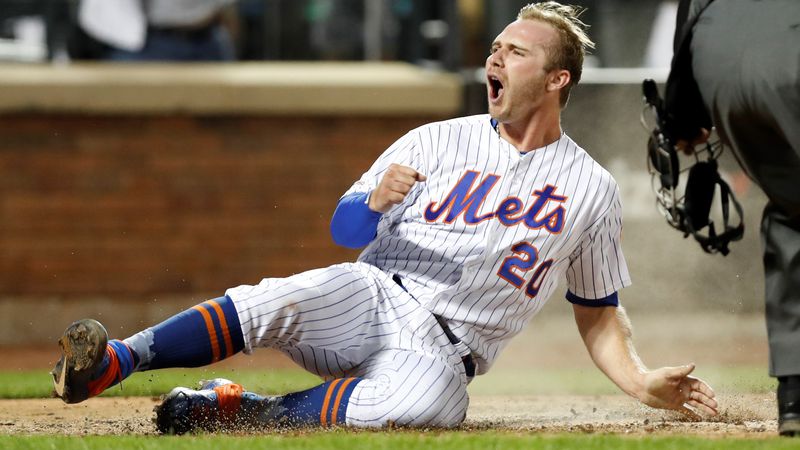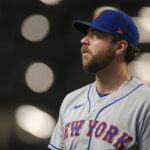
Pete Alonso and David Wright aren’t exactly similar to one another.
Sure, they’re both right-handed, but one is retired and the other’s career is (hopefully) just getting started, they’re from different areas of the country, and they play different positions on the diamond. Last, but most certainly not least, Alonso has flashed the kind of prodigious power we never saw from Wright.
Despite all that, they are actually pretty similar to one another.
Each have represented the New York Mets in the best possible light given the period of time they’ve been associated with the organization and had much anticipated MLB debuts. Wright is the last player New York named as the team’s captain, and if things continue going in the current direction, Alonso could end up being next. Last, but most certainly not least (again), Wright is unequivocally the Mets’ best third baseman in team history, while Alonso has given himself a terrific head start with regard to etching his name in New York’s all-time record books.
When thinking about these two guys and how they could continue being connected to one another heading into the future, I got to thinking about one final similarity that one has achieved and one has a chance to achieve: continuity at their respective positions.
With regard to total games played at third base, Wright easily has the top spot on the leaderboard, suiting up to man the hot corner 1,586 times. The man in second place — Howard Johnson — would have to come out of retirement and more than double his current career games played at third (835) for the Mets to catch the Captain. There’s approximately as much space between Wright and Johnson as there is between Johnson and Joe Torre, who sits at 28th place with 87 games played.
As he typically did during the healthy portion of his playing career, Wright also brought the noise on a yearly basis. The Mets had a handful of good third basemen between 1962 and 2003, but there were only two occasions where someone led the team in games played at the position for more than three consecutive years: Hubie Brooks (1981-84) and Johnson (1987-91).
Then, of course, Wright took charge by leading in this category between 2004 and 2015, according to Ultimate Mets Database. That kind of longevity was something New York had obviously never had at this position before, and the top-tier production for the majority of that time was just icing on the cake.
Upon seeing this, I had to head over to first base in order to see whether Alonso could make a similar mark if he continued his current trajectory and was able to stick around in Flushing for the long haul. He’s got a ways to go before catching Ed Kranepool (1,302 career games at first base), but he’s in good shape after just one year. There have been 164 different players to man first base as a Met, and Alonso’s 153 games played from 2019 already has him at 19th all-time in franchise history.
Using the same parameters on a yearly basis, there have only been two Mets first basemen to lead the team in games played in more than three consecutive years: Kranepool (1964-69) and Keith Hernandez (1983-88). Kranepool does get some extra credit because he led the team in this category 10 times between 1964 and 1976.
Even though the 2020 season will feature a shortened schedule (if we get one), we can assume Alonso will reign supreme atop the games played leaderboard at first base for the second straight year, as long as he’s healthy. That trend will almost undoubtedly continue through his pre-arbitration and arbitration years, which would already put him into the above exclusive club with Kranepool and Hernandez (again, assuming he’s healthy). And if the Mets extend him beyond their initial team control, he could approach the territory Wright currently has on lock.
Alonso’s National League Rookie of the Year campaign was certainly one to remember, and one the record books won’t forget, either. He has a ways to go when it comes to having the kind of longevity that’ll truly set him apart from the majority of players who have ever donned the orange and blue, but the future sure looks bright for the 25-year-old as he approaches his physical prime.















